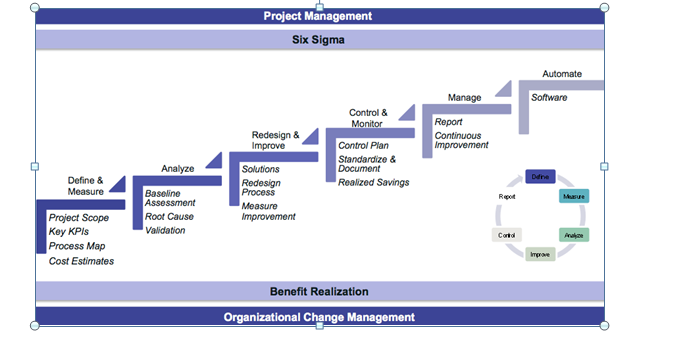Business Process Modelling
Insurance Claim Process:
In order to understand the insurance claim process, it is requiring starting with the process goal. The below mention case will summarise the process and its goal:-
Yes
Accept
Customer Claim No
(Self-Created)
It indicates that the insurer accepts the claim if it is calculating then it goes to make payment. On the other hand, the claim is rejected then it sends rejection to customer (Danico et al., 2011).
Handling Large Volume:
In order to handle large volume of claims then there is need to follow this process case:-
High value No
Yes complex?
(Self-Created)
In this process, it is separated into four easier tasks from top row to bottom row. The top row includes the two exclusive gateways such decision to check whether special processing is required. Most of the claims are handled by the junior assessors (Kimura et al., 2010).
However, junior assessor monitors that whether further processing is required by a senior assessor. At last, senior assessors can be left with a smaller workload and they also investigate high-value claims and process complex claims.
The areas in which company could improve their insurances claim process are as follows:-
- Focus on business reengineering process: With the BRM platform, insurers could able to perform the transactions quickly in the area of claim operations. This helps to achieve the competitive advantage (Trkman, 2010). The use of reengineering process technology provides insurers with the ability to leverage a core best practice claim process through store the policy and procedure. This process helps the insurance organisation to systematic handle the claims and fulfils the requirements of client’s in a timely manner.
- Automated case management: Claim best practices look fantastic when it prepare in front of clients but to implement such practice becomes complex for insurer to execute the claims. In that case, each claim settlement process demands for customised approach so that insurance claims can be settle down.
- Insurer depends upon the claim organisation for satisfying the customer, deliver strong operating result. If in case, company fails to deliver rights services then it gives the negative impression in front of customers. In regards to this, insurer can collects the information of customer from social sites. The digital platform is the key platform to contact directly with the target client. This can help to provide valuable experiences to customer.
- To reduce the large number of frauds and ill practices in insurance claims by review the company policy and producer. The case of fraud is more in the insurance private sector. in that situation, there is high need to appoint the authority in order to protect the interest of client’s
The improvement in these areas provides huge benefits in the form of timely address the claim operations. The reengineering process helps the insurance companies to automate the functions and handle multiple clients at a time. Furthermore, it allows to tracking the progress between intermediaries and a payer through an electronic audit trail.
It tends to bring improvise in the accounts receivables (Weerakkody et al., 2011). On the other hand, it reduces the chances of number of errors, mistakes etc which proves to be effective for the client’s. Thus, such improvement provides positive impact on the client as they develop the good faith and trust towards the insurance company.
Business reengineering process proves to be crucial for the business in regards to successfully implement the ERP system. However, business process reengineering is considered as a business management strategy which concentrates on the design of workflow and business processes in the business.
Basically, BPR allows the company to bring improvement in customer services through cut operational cost. It results in accomplishing the competitive advantage against the key competitors. There are various companies that use the business reengineering process such as Ford, Taco bell, hallmark etc.
These companies use the engineering process for different reasons. Likewise, ford follows such practice due to inappropriate and complex invoice number. The use of business process modelling helps the ford to send the copy of purchasing order form to the creditor rather than record the order in the online database.
When the order appear at store then IT manager checks whether purchase order form is there in system. If it exist then tend to accept such order otherwise returned the order. Thus, through this manner, ford can able to bring improvement in its invoice pattern.
Similarly taco bell is using the engineering process in its retail outlets with the aim to improve the quality, reduce the maximum errors and injuries etc. Therefore, business process modelling contributes high efficiency for different reasons.
Other than that, there are certain reasons within which decide the implementation of business reengineering process before install the ERP system.
- Maintain the Competitive Advantage: The growing competition in business put pressure on firm to invest in multiple portfolio and such practice demand high transactions and records. Likewise, ton of spreadsheets, manual workarounds and other inefficiency that create constraints for the business to achieve the competitive advantage against the key competitor (Wang et al., 2010). In such situation, the software configuration helps the company to maintain the different aspects which is crucial to implement the ERP system.
- Faster realization of business process improvement and business benefits: the main reason of using the business process is to give support to ERP software. This system automates each and every operation so to deal with the organizational change management. For example, the company decides to improvise the purchase order approval workflow so that it controls tightly towards the procurement costs. For this, they develop the business reengineering process to supports the implementation of ERP. As this system also allows to identifying the area where excessive cost is generating. Thus, it helps to faster realisation of business process and allows achieving maximum business benefits.
- Build the quality through including six-sigma: lean six-sigma is the practice which defines the efficiency, cost drivers of company. Based on such areas, company can enhance the efficiency through developing the quality of product offering. This is done through the business reengineering process as it includes various steps which contribute to increase the efficiency in product or services. The graphical presentation shows the how business process reengineering builds the six-sigma into the business practice.

Figure 1: Six Sigma into the business reengineering process
There are different methods which support the implementation of business reengineering process:-
The business reengineering methodology stated that BPR redesign the corporation from the bottom up. It means that it starts the operations from bottom of organization. Thus, it gives fresh start to all the processes. It uses the unique methodology while implement at the business operations.
Merits:
- It provides improvements to each business process without missing any aspect
- The chances of failure tend to be less
Demerits:
- It is time consuming activity
- It includes numerous complex task which could proves to be negative for company
The business process reengineering methodology redesigns the vision, mission of the company so that improvement can be done from initial level. The change happens to be fast and it avoids inefficiency and limitation of the business operations. Therefore, this method also contributes high towards the implementation of ERP.
Merits:
- The redesign of vision and mission of company brings the entire development into the business
- It contributes towards the progress in customer service
Demerits:
- It demands for higher investment
- It could also lower the morale of staff
In a similar manner, the business process reengineering methodology includes various steps and it is mention below:-
- Planning and Preparation for Reengineering
- Analyse the map i.e. AS-IS processes.
- Identify the unnecessary task which creates waste.
- Design the waste and validate into the processes
- Implement the reengineering process through adapting right system, functions at organization.
Merits:
- It is helpful for the total reinvention.
- It is mainly used to cut the necessary cost and improves the functionality
Demerits:
- It is not useful for making the small improvements at workplace.
- It is not easy to implement due to involvement various aspects.
Moreover, BPR in the initial level tend to fulfil the radical requirements of organization. Hammer is the supporter of this process. As per the Hammer/Champy methodology, it defines the terminology in a manner of redesign the business processes for achieving the improvements.
This methodology provides the cost reduction, quality, service and speed etc. The company can achieve the efficiency in reality with the help of reengineering. Hammer and Champy indicate these aspects as four points of the business system. It is mention below:-
- Job and structures
- Business processes
- Values and beliefs
- Management and measurement systems
Thus, these are the business system diamonds in reengineering process. In order to bring change in organisation, the manager starts from these areas only (job and structures, business processes, values and beliefs and management systems). Moreover, Champy mentions the six phases of methodology that are as follows:-
- Introduction into business reengineering
- Identification of business processes
- Selection of business processes
- Understanding of selected business processes
- Redesign the target business processes
- Implementation of redesigned business processes
Merits of Hammer/Champy methodology
- This methodology improves the quality of service and enhances the customer satisfaction.
- It reduces the high chances errors, mistakes in the business process.
Demerits of Hammer/Champy methodology
- The probability of delay is present (Jeston & Nelis, 2014).
- Inability to quantity improvements.
Danico, A. G., Heidenheim, A. R., Hopkins, S. E., Murphy, J. D., Lim, S., & Shriner, S. E. (2011). U.S. Patent No. 7,885,829. Washington, DC: U.S. Patent and Trademark Office.
Jeston, J., & Nelis, J. (2014). Business process management. USA: Routledge.
Kimura, S., Sato, T., Ikeda, S., Noda, M., & Nakayama, T. (2010). Development of a database of health insurance claims: standardization of disease classifications and anonymous record linkage. Journal of epidemiology, 20(5), 413-419.
Trkman, P. (2010). The critical success factors of business process management. International journal of information management, 30(2), 125-134.
Wang, W. Y., Chan, H. K., & Pauleen, D. J. (2010). Aligning business process reengineering in implementing global supply chain systems by the SCOR model. International Journal of Production Research, 48(19), 5647-5669.
Weerakkody, V., Janssen, M., & Dwivedi, Y. K. (2011). Transformational change and business process reengineering (BPR): Lessons from the British and Dutch public sector. Government Information Quarterly, 28(3), 320-328.



As a Newbie, I am always searching online for articles that can help me.Thank youmy blog post: omega 3 fish oil bulk size ordering
https://suba.me/
I found this website called that might fit what you’re looking for Sex 11
https://aev99.day/